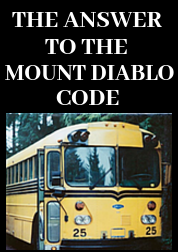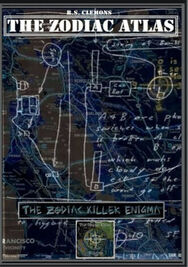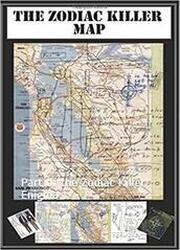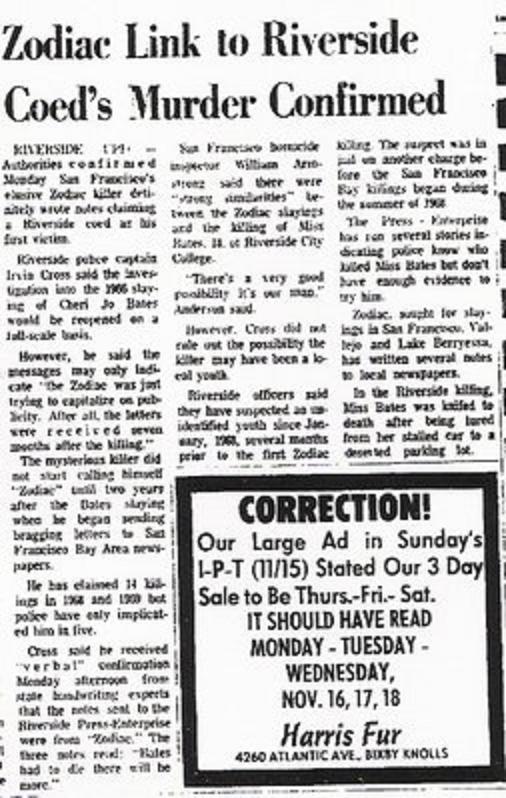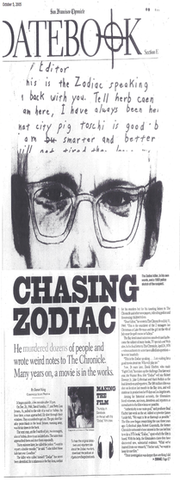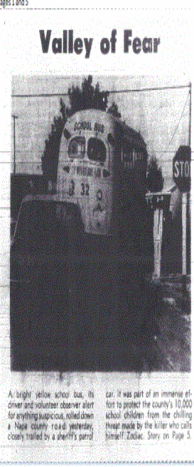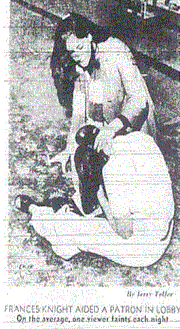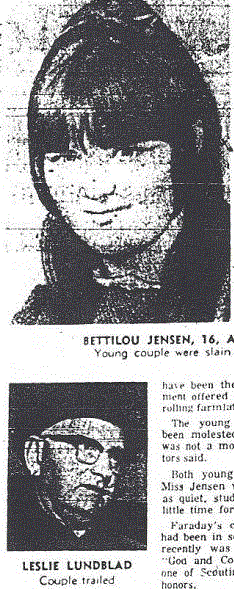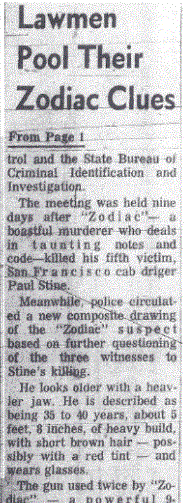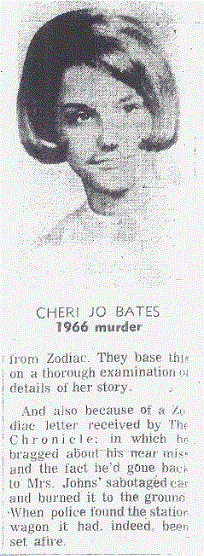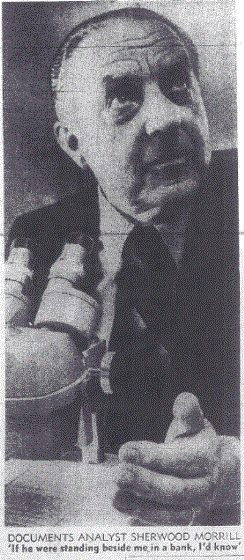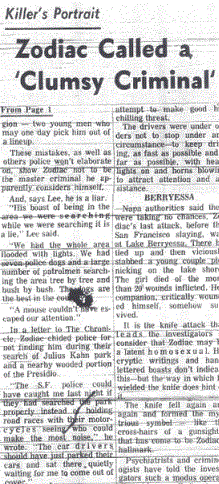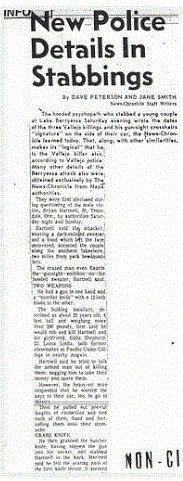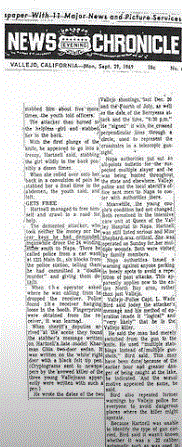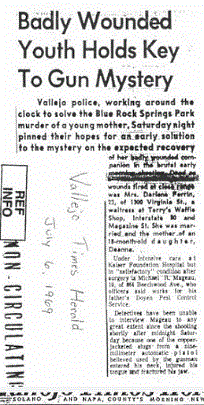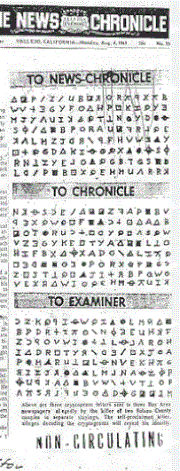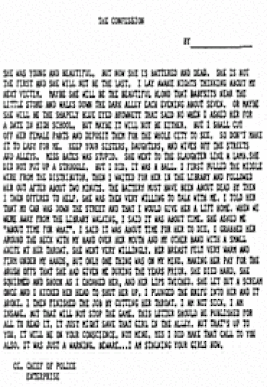 Click to enlarge
Click to enlarge The readability level of the above text of this article has an average grade level of 17.04 and a median grade level of 16.40. The November 29th 1966 Confession letter has average grade level of 3.80 and a median grade level of 3.97. These results were calculated using five tools: the Gunning fog index, the Flesch-Kincaid readability tests, the SMOG grade, the Coleman-Liau index and the Automated readability index. Here is a brief run down of each from Wikipedia and their respective link.
Gunning fog index: In linguistics, the Gunning fog index is a readability test for English writing. The index estimates the years of formal education a person needs to understand the text on the first reading. A fog index of 12 requires the reading level of a U.S. high school senior (around 18 years old). The test was developed by Robert Gunning, an American businessman, in 1952. The fog index is commonly used to confirm that text can be read easily by the intended audience. Texts for a wide audience generally need a fog index less than 12. Texts requiring near-universal understanding generally need an index less than 8.
Flesch-Kincaid readability tests: The Flesch–Kincaid readability tests are readability tests designed to indicate how difficult a passage in English is to understand. There are two tests, the Flesch Reading Ease, and the Flesch–Kincaid Grade Level. Although they use the same core measures (word length and sentence length), they have different weighting factors. The results of the two tests correlate approximately inversely: a text with a comparatively high score on the Reading Ease test should have a lower score on the Grade-Level test. Rudolf Flesch devised the Reading Ease evaluation; somewhat later, he and J. Peter Kincaid developed the Grade Level evaluation for the United States Navy.
SMOG grade: The SMOG grade is a measure of readability that estimates the years of education needed to understand a piece of writing. SMOG is an acronym for Simple Measure of Gobbledygook. SMOG is widely used, particularly for checking health messages. The SMOG grade yields a 0.985 correlation with a standard error of 1.5159 grades with the grades of readers who had 100% comprehension of test materials. The formula for calculating the SMOG grade was developed by G. Harry McLaughlin as a more accurate and more easily calculated substitute for the Gunning fog index and published in 1969. To make calculating a text's readability as simple as possible an approximate formula was also given — count the words of three or more syllables in three 10-sentence samples, estimate the count's square root (from the nearest perfect square), and add 3.
Coleman-Liau index: The Coleman–Liau index is a readability test designed by Meri Coleman and T. L. Liau to gauge the understandability of a text. Like the Flesch–Kincaid Grade Level, Gunning fog index, SMOG index, and Automated Readability Index, its output approximates the U.S. grade level thought necessary to comprehend the text. Like the ARI but unlike most of the other indices, Coleman–Liau relies on characters instead of syllables per word. Although opinion varies on its accuracy as compared to the syllable/word and complex word indices, characters are more readily and accurately counted by computer programs than are syllables.
Automated readability index: The automated readability index (ARI) is a readability test for English texts, designed to gauge the understandability of a text. Like the Flesch–Kincaid grade level, Gunning fog index, SMOG index, Fry readability formula, and Coleman–Liau index, it produces an approximate representation of the US grade level needed to comprehend the text.
As another guide, I used the written text from the Coleman–Liau index above to generate an average grade level of 15.69 and a median grade level of 15.72. To check any section of text or the given examples, visit here. Here are the results:
The Confession letter 11/29/66 has average grade level of 3.80 and a median grade level of 3.97.
The Riverside Desktop poem 1966 has average grade level of 3.89 and a median grade level of 4.00.
The San Francisco Chronicle 7/31/69 has average grade level of 8.15 and a median grade level of 8.12.
The Debut of Zodiac letter 8/4/69 has average grade level of 6.73 and a median grade level of 5.96.
The Paul Stine letter 10/13/69 has average grade level of 7.71 and a median grade level of 7.83.
The Bus Bomb letter 11/9/69 has average grade level of 8.56 and a median grade level of 8.69.
The Melvin Belli letter 12/20/69 has average grade level of 6.25 and a median grade level of 5.66.
The readability levels of the 1966 correspondence is notably lower than the initial Zodiac correspondence, although one has to factor in the near three-year maturation of the subject, if indeed they are the same individual. But both are extremely low on the scale, indicating the Zodiac Killer and author of the Confession letter were either extremely uneducated, or extremely accomplished at pretending to be uneducated. Whatever the case, there is a notable shift from 1966 to 1969.
The above enlarged text has average grade level of 16.50 and a median grade level of 16.27, which highlights the difference in readability level the author in Riverside and northern California was operating at, either by intention or not.
https://charactercounttool.com/




 RSS Feed
RSS Feed

